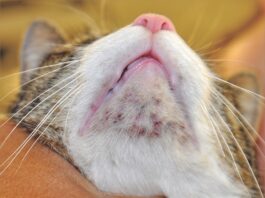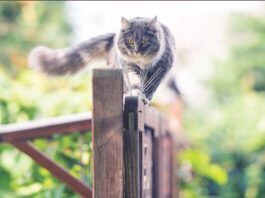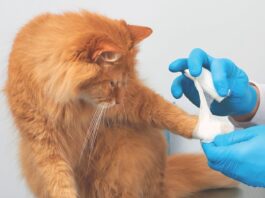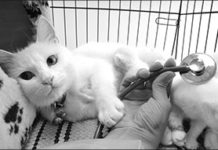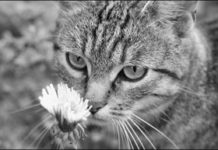The Common Cause of Ear Infections
One common reason for veterinary visits among cats is otitis externa, or inflammation of the external ear canal. Most people believe that that the term otitis externa means an ear infection, but that isnt true. Something has to breech the normal defense mechanism of the ear to trigger the infection, says veterinary dermatologist William H. Miller, Jr., VMD, Medical Director of the Cornell University Hospital for Animals. Once the surface of the ear canal is damaged, bacteria or yeast inside and around the canal can cause an infection. The underlying causes can include tumors, allergies, ticks or fleas, and excessive grooming and ear wax. But by far the most frequent cause in cats, especially kittens, is ear mites.
Those Lovely Lilies? Theyre Lethal
A touch of green around the house during a long, cold winter provides a reminder of spring and creates a festive mood for the holidays. Although plants like lilies are lovely, the effects on a cat who ingests them are decidedly not. In the case of lilies of the Lilium species, cats can suffer potentially fatal kidney failure.
Most Cases of Deafness Are Acquired
If your cat has become unresponsive to everyday sounds, squeaky toys or his name, if he doesnt know youre in the room unless you touch him, or if a loud noise fails to awaken him, a veterinary visit should be scheduled to determine if hes losing his hearing. Hearing is a vital sense for cats and greatly contributes to their self-preservation and comfort with us. Deafness in cats can be caused by a wide variety of conditions.
What to Expect Pre- and Post-Surgery
Chances are that your cat will face a surgical procedure at least once during his lifetime if he hasn’t already. Happily, the nature of veterinary surgery is changing, which may mean that your cat’s next encounter could differ considerably.
How to Avoid Those Sharp Feline Bites
Cat bites don’t get as much media coverage — or as much scientific attention — as dog bites because they tend to occur inside the home. Moreover, people mistakenly assume that, because cats are small, they can’t do much damage. In fact, puncture wounds made by sharp feline teeth are not only painful, they can lead to serious infections. It’s important to learn how to avoid them. Although cats sometimes appear to attack out of the blue, they always have their reasons, says Katherine A. Houpt, VMD, Ph.D., emeritus professor at the Cornell University College of Veterinary Medicine and diplomate of the American College of Veterinary Behaviorists. “Fear, predatory aggression, and pain top the list.
When a Marauding Bee Strikes
Cats, even those who live strictly indoors, are never completely safe from venomous insects. All it takes is a wayward bee or wasp to slip through an open door or window and catch your cat’s attention. His innate prey drive can kick into gear as he leaps and tries to swat and eat the flying insect. In reaction, the bee delivers a painful sting. “Most bee or wasp stings occur on a cat’s front paw or face,” says Elisa Mazzaferro, DVM, Ph.D., who specializes in emergency and critical care at the Cornell University Veterinary Specialists Center in Stamford, Conn.
Short Takes: September 2013
The sad truth about cats’ access to veterinary care in the U.S.: They don’t have much. Surveys show that nearly twice as many dogs visit the veterinarian as cats, even though the cats outnumber dogs — 86 million versus 78 million. Thirty-nine percent of owners say they would take their cat to the veterinarian only in the event of illness; and 60 percent report that their cat hates going to the veterinary clinic. The visits may stress both owners and cats, says the American Association of Feline Practitioners. To offer a more calming, encouraging environment, it has launched an initiative to improve cats’ treatment, handling and overall health.
The Team Approach to Success
Steffi Loomis awoke in the middle of the night to the sound of painful meows from Dave, her normally mellow 16-year-old female cat with a male name. When Loomis turned on the light, she discovered bloody diarrhea and vomiting and her orange tabby getting weaker and sicker by the minute. Loomis, who lives in New Canaan, Conn., contacted the veterinarian, who advised her to take Dave immediately to Cornell University Veterinary Specialists in nearby Stamford, Conn. CUVS, the largest university-affiliated veterinary referral service in the country, has been referred to as the Mayo Clinic of veterinary medicine. Loomis rushed Dave there, and a team of specialists quickly worked to save her life.
Life-saving Steps to Stop Bleeding
If your cat steps on broken glass, catches his dew claw in the carpet or has his ear bitten in a catfight, expect blood to flow. Witnessing any of these scenarios can be jarring, but at times like these you need to know the steps to slow or stop the bleeding and take your cat to the nearest veterinary clinic. You have an emergency on your hands.“A laceration of a large artery or vein could lead to life-threatening bleeding in minutes,” says Daniel J. Fletcher, DVM, Ph.D., Assistant Professor of emergency and critical care at the Cornell University College of Veterinary Medicine.
An Unmistakable Sign of Anal Problems: Scooting
Scent is one of the ways cats communicate, and their anal glands help in that effort. The pea-sized glands, or sacs, produce an odor that aids in establishing identity and territory. When a cat defecates, the scent glands empty through two ducts located at the 4 o’clock and 8 o’clock positions of the anal sphincter, the band of muscle encircling the anus.
Study Puts Feral Cats in the Spotlight
A study published earlier this year that found free-ranging cats annually kill an estimated 2.4 billion birds and more than 20 million mammals drew heated responses from both wildlife and cat advocates.Lost in the controversy was the plight of outdoor cats themselves. They suffer from exposure to extreme weather and more injuries caused by cars, dogs, other cats and wild animals than those who live indoors, says Bruce G. Kornreich, DVM, Ph.D., Associate Director for Education and Outreach at the Feline Health Center at the Cornell University College of Veterinary Medicine.
Shelter Help Desk Reduces Admissions
When behavior problems seem insurmountable, many owners surrender their pets to shelters. The Nevada Humane Society in Reno lowered admissions by 8 eight percent with one simple change: It created the Animal Help Desk, a free phone service. “We see it as part of our mission to encourage and enable people to do right by their animals by helping them keep their pets in their homes whenever possible,” Executive Director Bonney Brown says in the e-newsletter No-Kill Nation from Maddie’s Fund.


